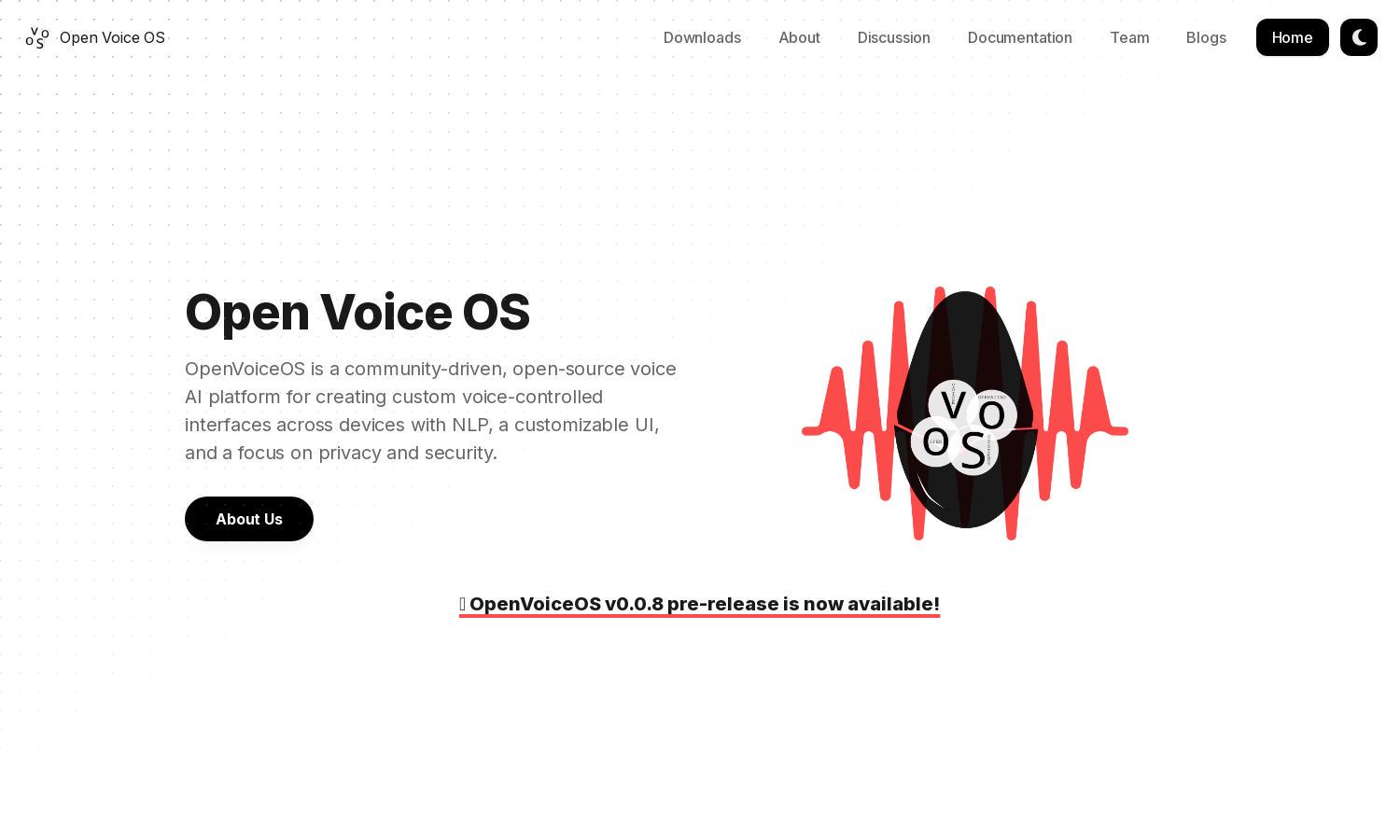Open Voice OS

About Open Voice OS
Open Voice OS is a community-driven, open-source platform designed for creating custom voice-controlled interfaces. It empowers developers with innovative features, allowing experimentation across various devices. The platform focuses on privacy and security, catering to those interested in advanced voice assistance technology.
Open Voice OS offers flexible installation options such as Docker and Python virtual environments. Users can choose between a super-stable Docker setup or a customizable Python environment to fit their development needs, ensuring a streamlined experience for various skill levels.
The user interface of Open Voice OS is designed for seamless navigation and accessibility. Its layout combines functionality with a clean design, making it easy for users to manage settings, install new skills, and customize voice interactions, enhancing the overall experience.
How Open Voice OS works
Users begin by installing Open Voice OS using either Docker or Python, following straightforward terminal commands. After installation, they can navigate the interface to customize their settings, install skills, or contribute to the community. The emphasis on privacy ensures a safe user experience.
Key Features for Open Voice OS
Community-driven voice AI
Open Voice OS features a community-driven architecture, allowing developers and contributors to collaborate on creating innovative voice assistance solutions. This unique aspect enhances its flexibility and adaptability, making Open Voice OS an ideal choice for those passionate about developing cutting-edge voice-controlled technologies.
Multi-platform compatibility
Open Voice OS supports a variety of platforms, enabling users to create voice-controlled systems on different devices, including embedded headless systems and Raspberry Pi. This multi-platform compatibility enhances user creativity, making it easy to experiment and develop custom voice interfaces tailored to various needs.
Easy installation process
Open Voice OS offers a user-friendly installation process with options for Docker and Python environments. This simplicity ensures that both novice and experienced developers can get started quickly, allowing them to focus on building custom voice solutions without facing technical hurdles during setup.








